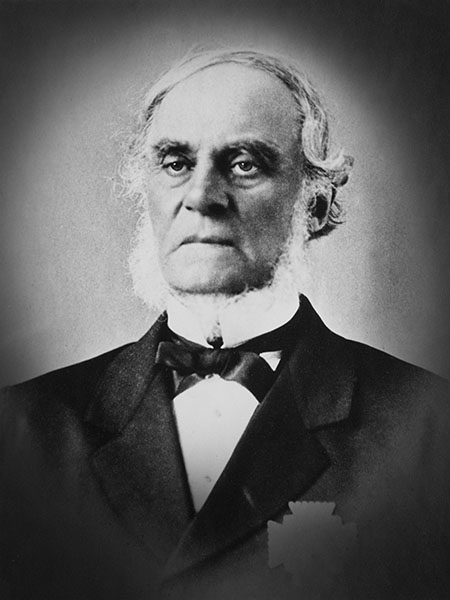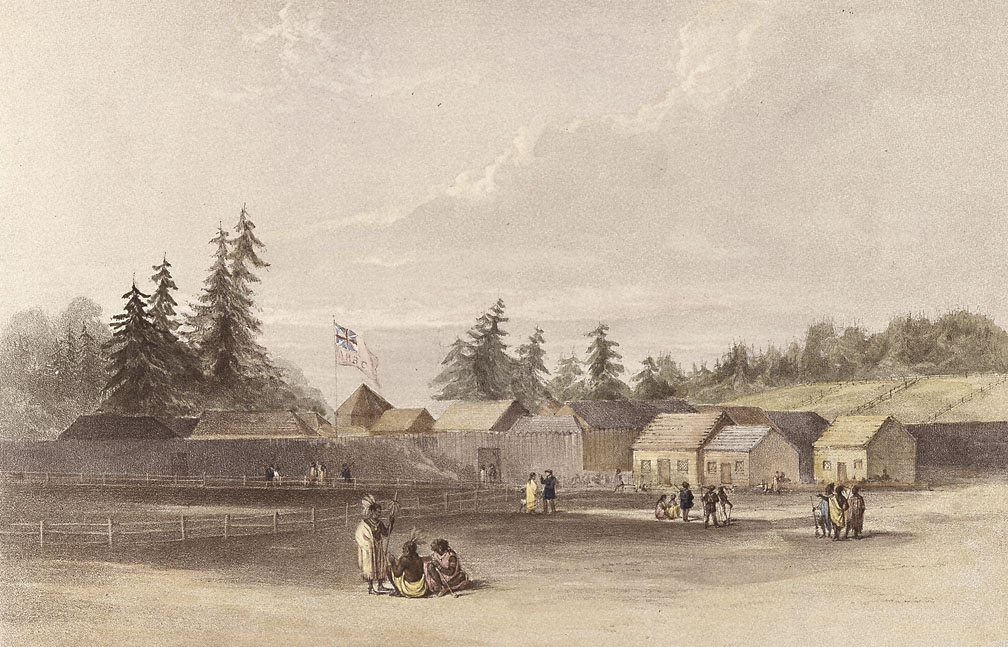explore fort vancouver

Dr. John McLoughlin
As Chief Factor from 1824 to 1845, McLoughlin was effectively the head of the Hudson's Bay Company's (HBC) Columbia Department, overseeing HBC's operations from Fort Vancouver. Often called the "Father of Oregon" for his significant role in the region's early development, he provided support to American settlers arriving via the Oregon Trail.

James Douglas
Serving as McLoughlin's apprentice, Douglas later became Chief Factor after McLoughlin's departure in 1845. He oversaw the HBC's withdrawal from Fort Vancouver following the Oregon Treaty of 1846. Douglas later became the Governor of Vancouver Island and British Columbia.

George Simpson
As the governor of HBC, Simpson was instrumental in the decision to build Fort Vancouver and regularly visited the fort during his administrative tours.
Sir George Simpson, the astute and enterprising Governor of the Hudson's Bay Company (HBC), played a pivotal role in the development of Fort Vancouver in the Pacific Northwest, despite never being stationed there permanently.

Peter Skene Ogden
An explorer and fur trader for the HBC, Ogden conducted numerous expeditions into the Western United States, often basing his operations out of Fort Vancouver.
Peter Skene Ogden, an integral figure in the early history of the Pacific Northwest, was a seasoned explorer and fur trader who spent a significant portion of his career operating out of Fort Vancouver for the Hudson's Bay Company (HBC).

Major John S. Hatheway
After the HBC's withdrawal, the U.S. Army took control of the site, establishing Columbia Barracks (later renamed Vancouver Barracks). Major Hatheway was one of the earliest American military commanders at the site.
Major John S. Hatheway, an American military officer, played a pivotal role in transitioning Fort Vancouver from a Hudson's Bay Company (HBC) trading post to a U.S. Army outpost, known as Columbia Barracks, later renamed Vancouver Barracks.

Ulysses S. Grant
Before he became a Civil War General and the 18th President of the United States, Grant served as quartermaster at Vancouver Barracks from 1852 to 1853.
Before Ulysses S. Grant ascended to prominence as a Civil War General and eventually the 18th President of the United States, he served at Vancouver Barracks, the military outpost at Fort Vancouver, which offered a unique vantage point of the Pacific Northwest frontier.
In 1852, Lieutenant Ulysses S. Grant was assigned to the 4th Infantry Regiment at Vancouver Barracks. His primary responsibility was serving as regimental quartermaster, a role that entailed managing supplies and logistics - a duty that would later prove invaluable during his Civil War leadership.

General O.O. Howard
A Civil War veteran and advocate for African American education, Howard served at Vancouver Barracks and was instrumental in negotiations during the Nez Perce War. Howard University in Washington D.C. is named in his honor.
General Oliver Otis Howard, an influential figure in American military history and civil rights, held a significant command at Vancouver Barracks, the military installment at Fort Vancouver, in the late 19th century.

George C. Marshall
Before becoming a General during World War II and serving as Secretary of State under President Harry Truman, Marshall was stationed at Vancouver Barracks from 1936 to 1938.
Before rising to prominence as a pivotal figure of World War II and the architect of the post-war European recovery program known as the Marshall Plan, George C. Marshall spent significant early years of his career at Vancouver Barracks, a military outpost at Fort Vancouver.

The Hudsons's Bay Company
Founded in 1670, the Hudson's Bay Company (HBC) is one of the oldest existing corporations in the world. Originally established by English merchants under a royal charter from King Charles II, HBC initially focused on the fur trade, operating an extensive network of trading posts across North America. The vast area over which they traded and conducted operations, known as Rupert's Land, comprised much of what is now Canada.

Key Events At The Fort
Establishment by the Hudson's Bay Company (1824): Fort Vancouver was established by the British Hudson's Bay Company as a fur trading post and the administrative center of the company's Columbia Department. Its location along the Columbia River made it a strategic hub for the lucrative fur trade and a center for agricultural production.

People At The Fort
Fort Vancouver in Vancouver, Washington, has a rich history and served as a key location for many influential individuals throughout its existence. Including dr. John McLaughlin, James Douglas, George Simpson, Peter Skene Ogden, Major John S. Hatheway, Ulysses S. Grant, General O. O. Howard, and Geroge C. Marshall.
